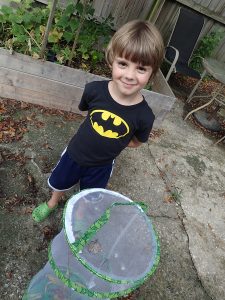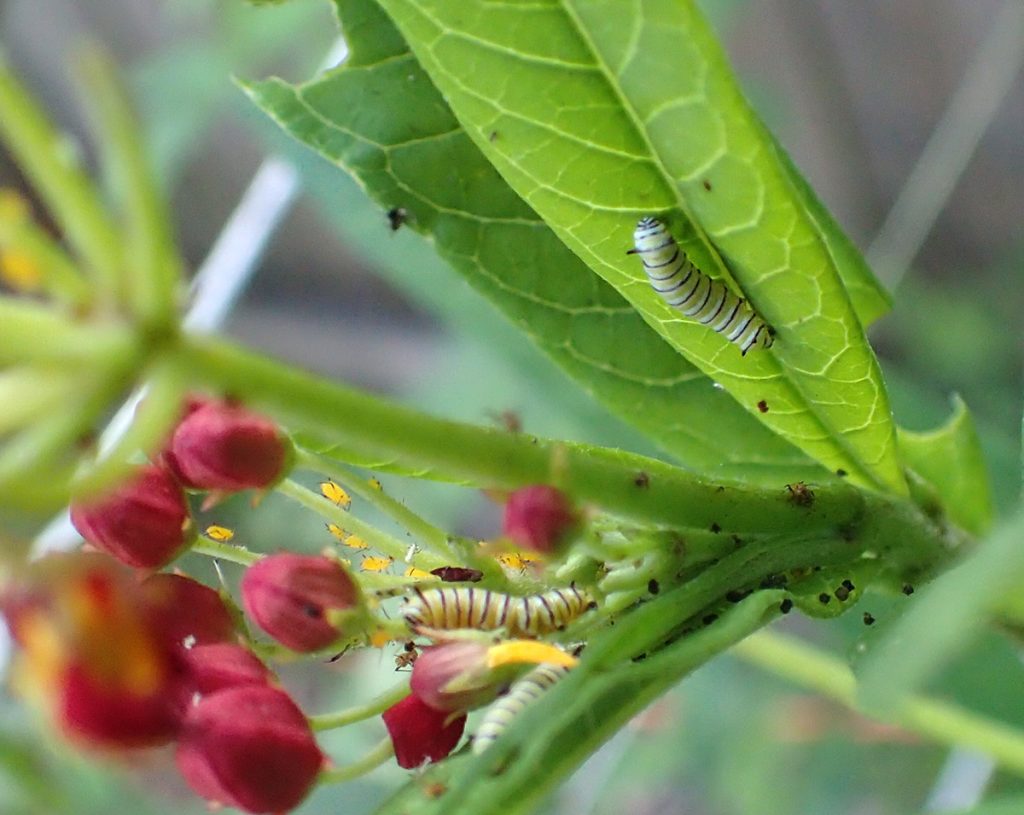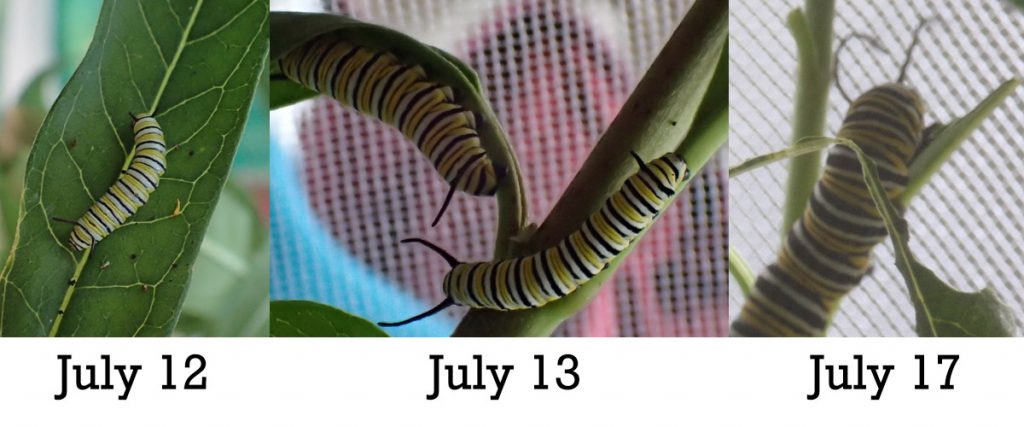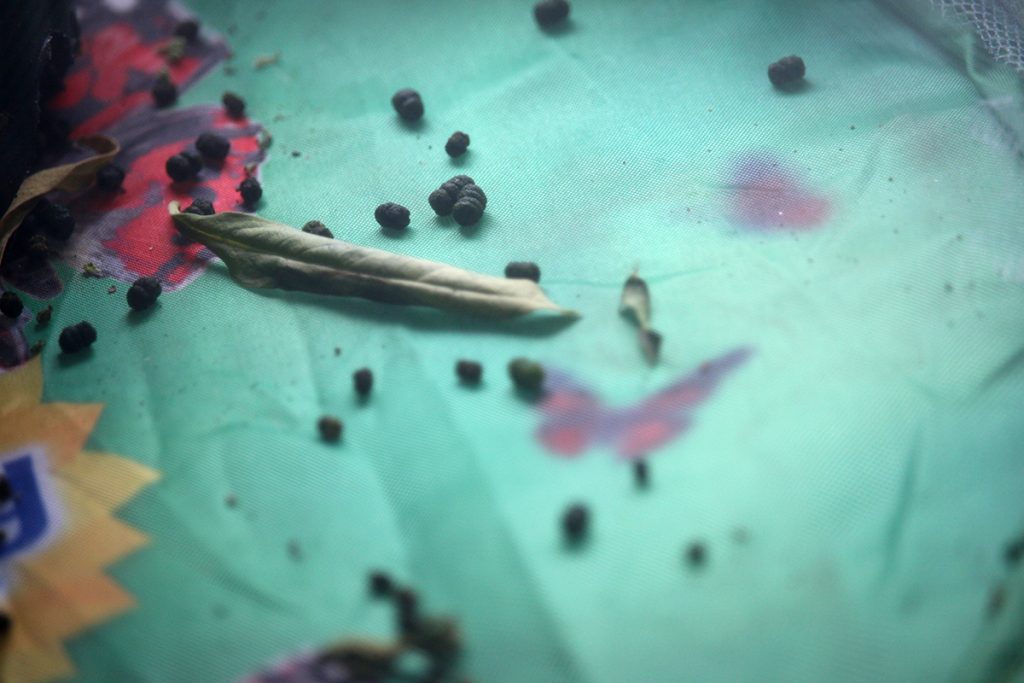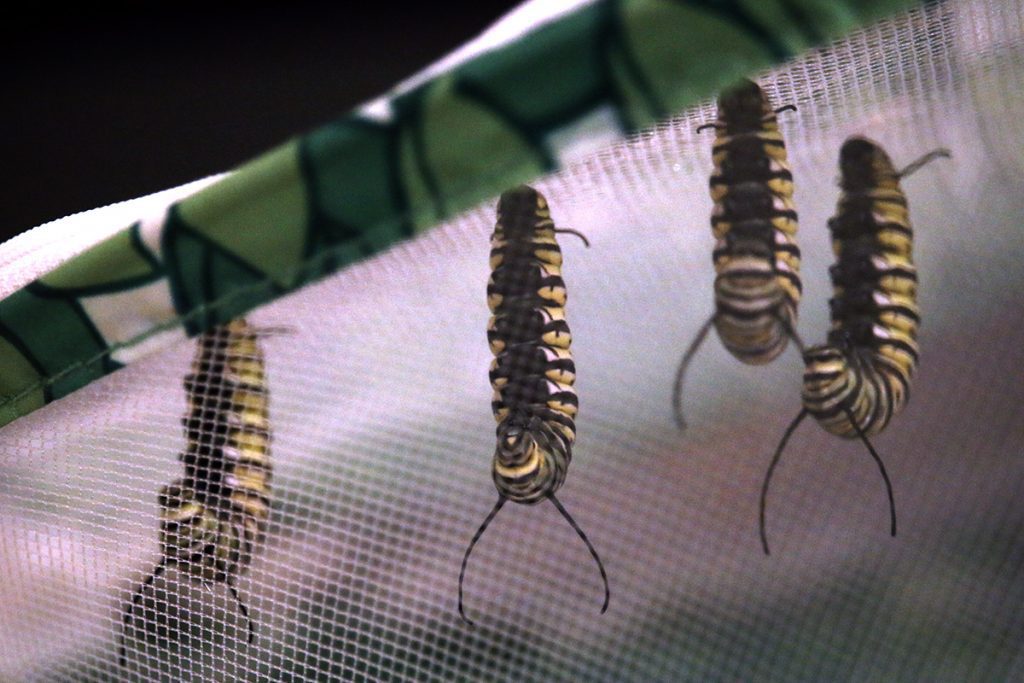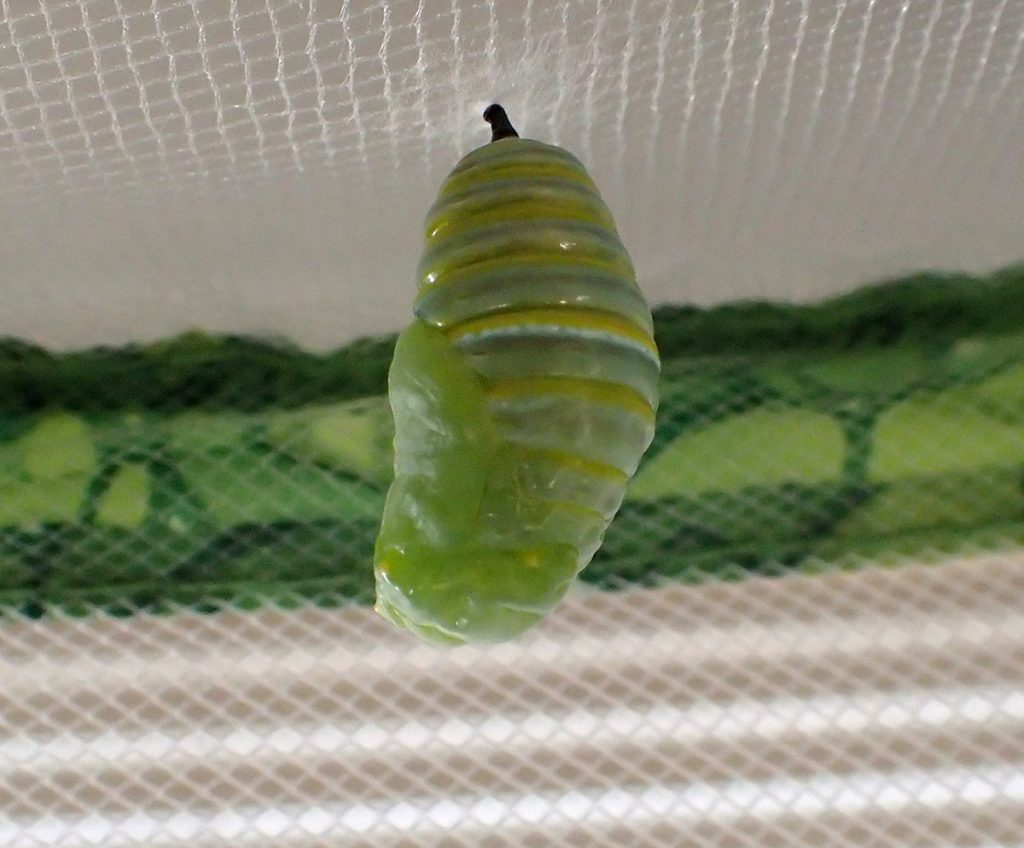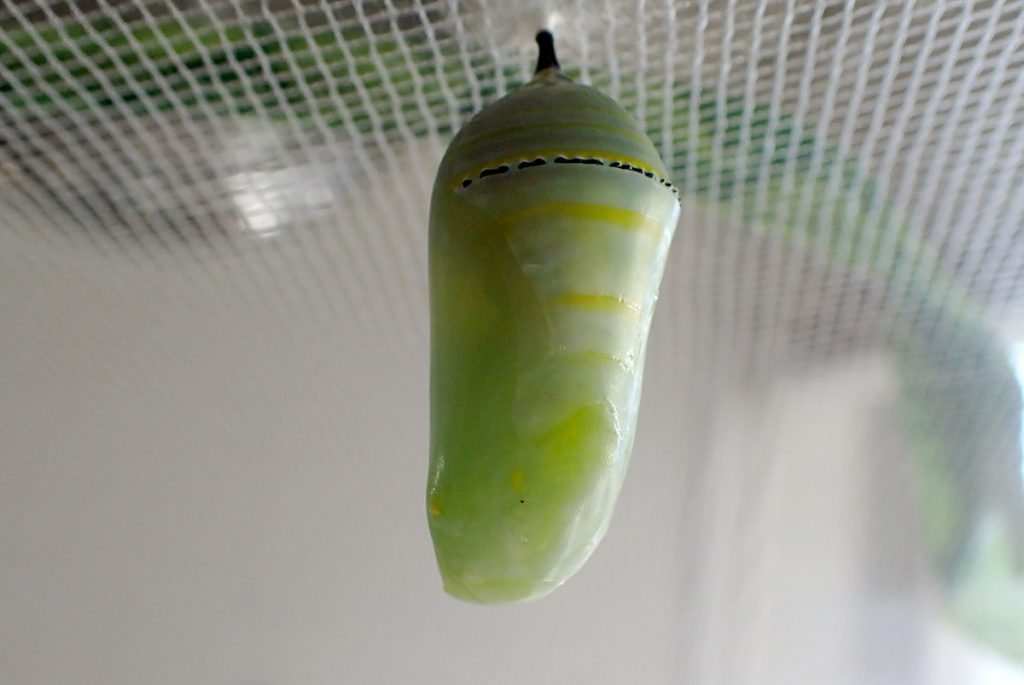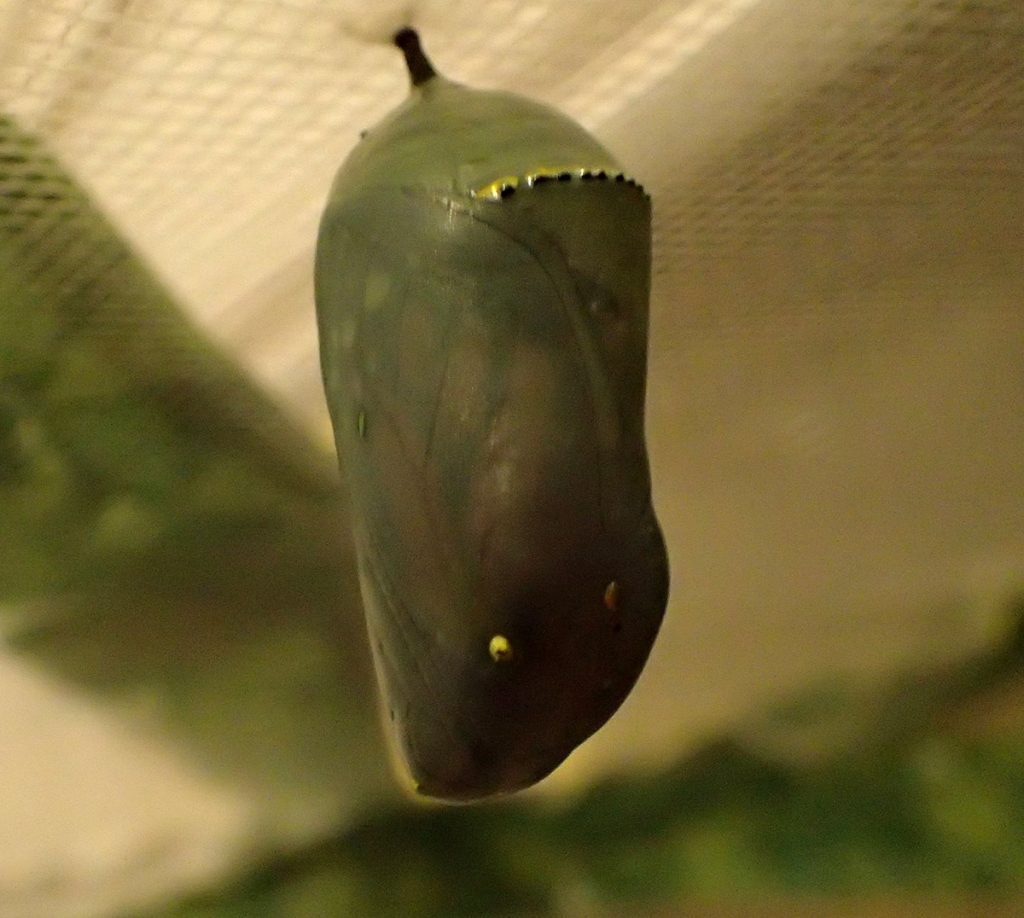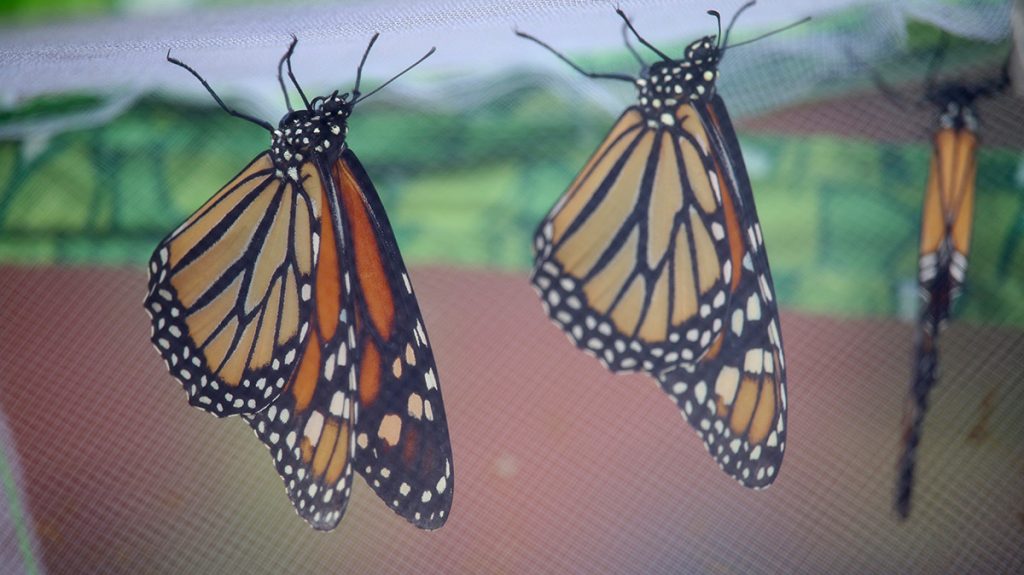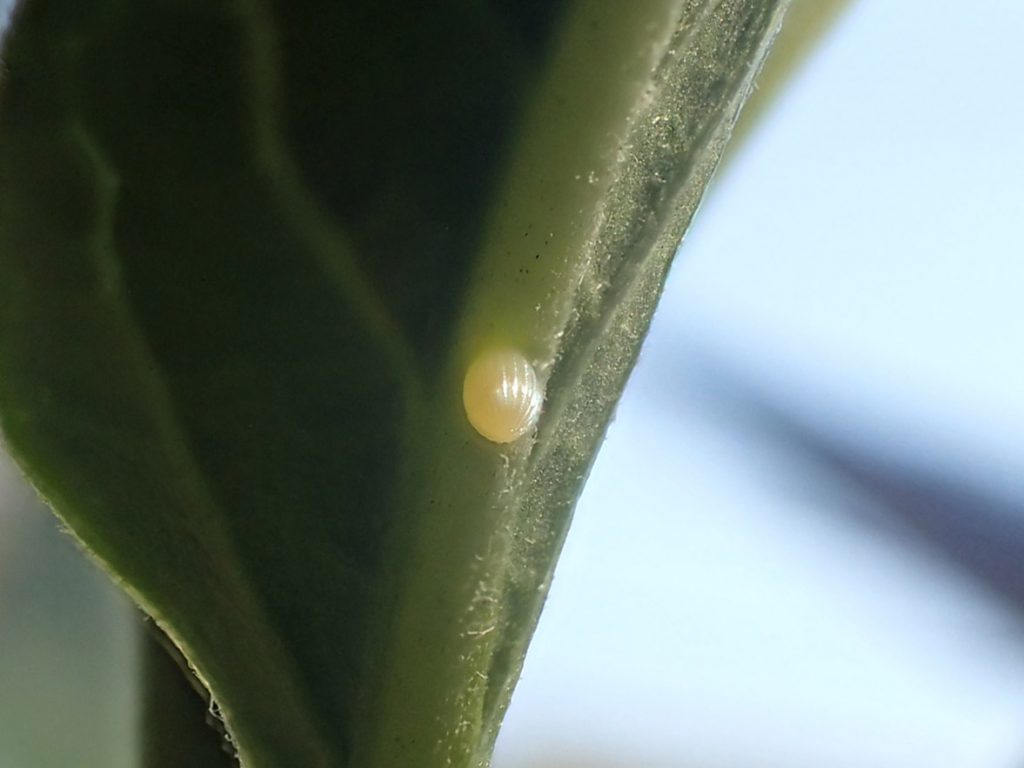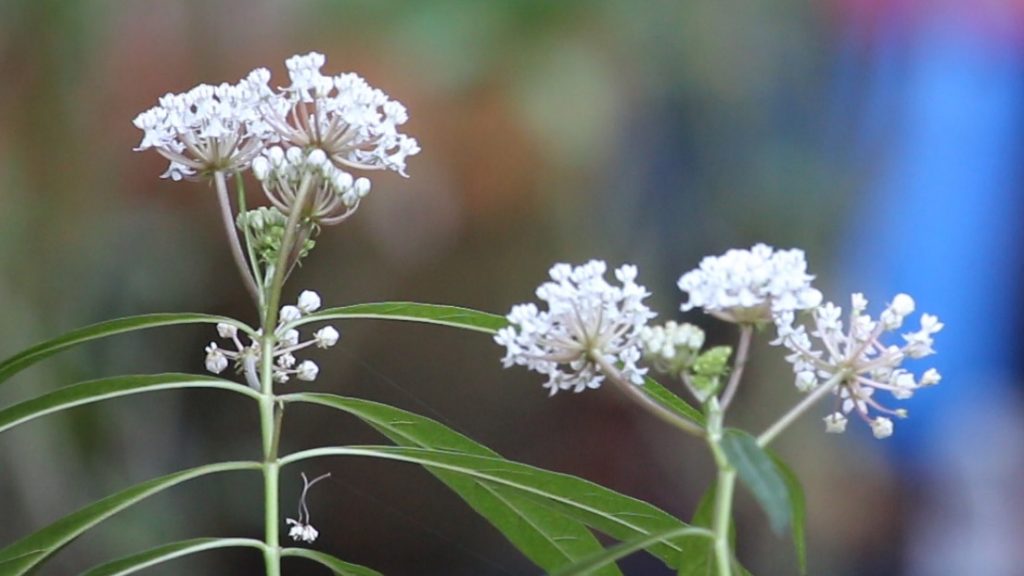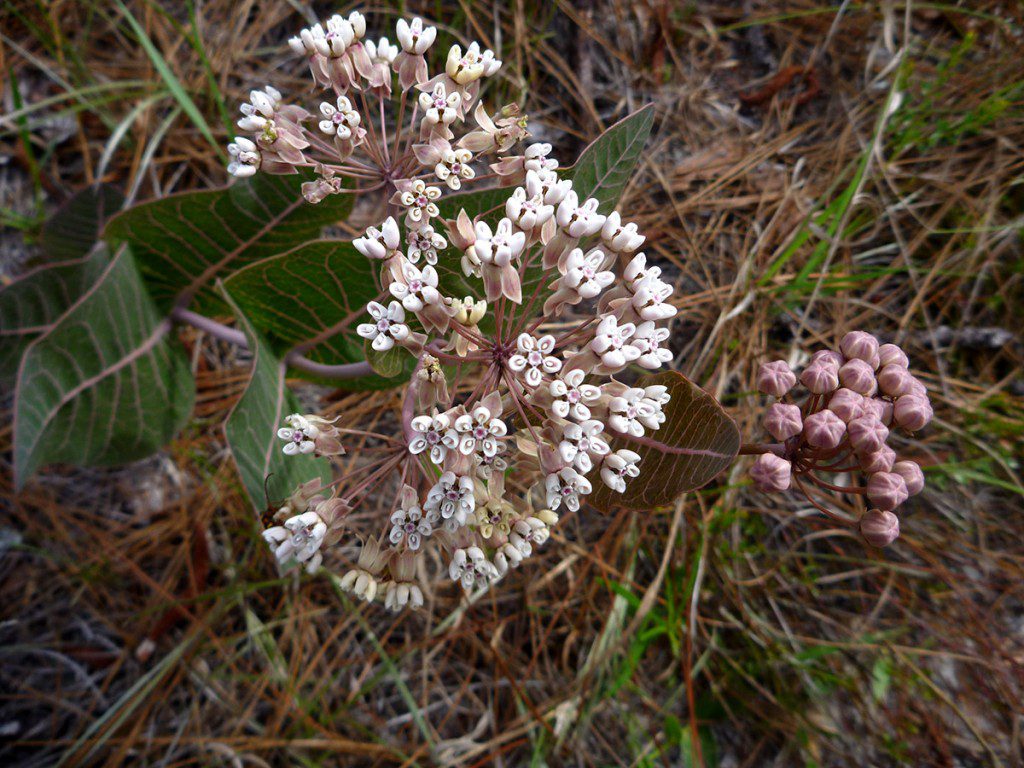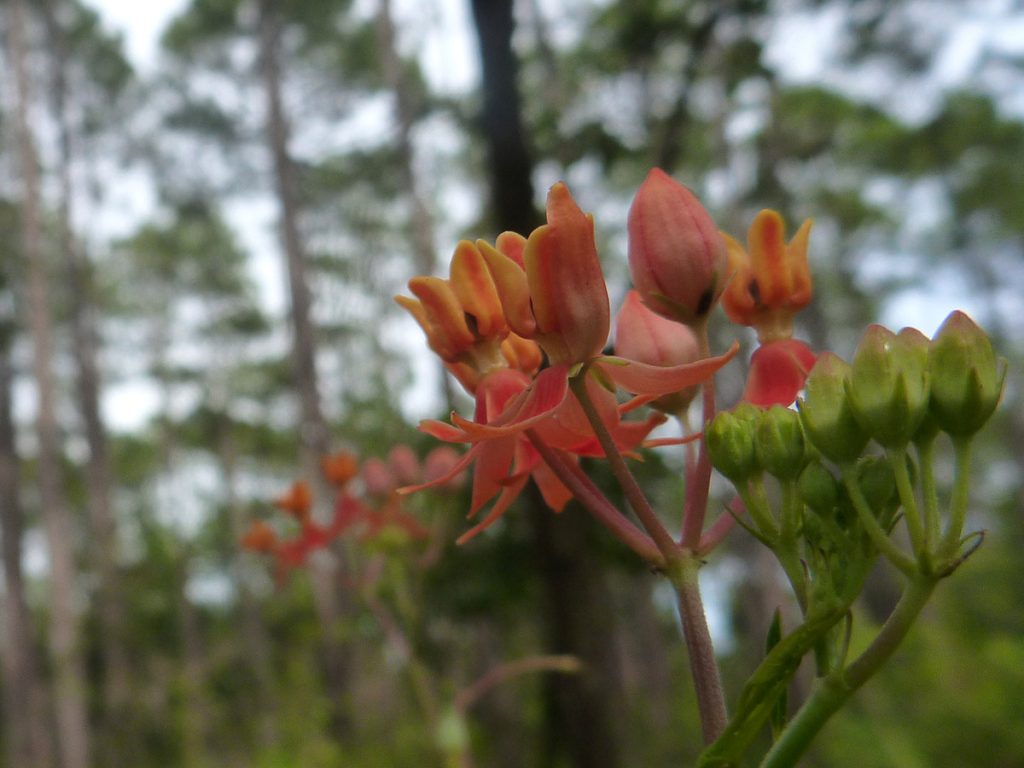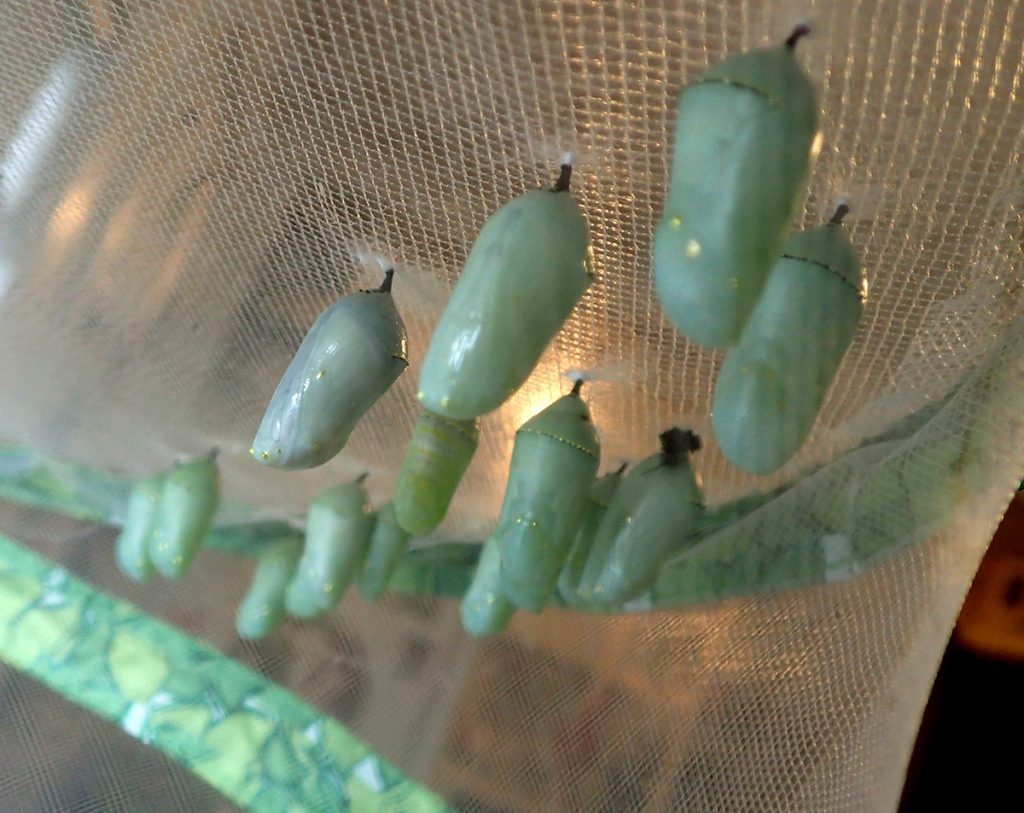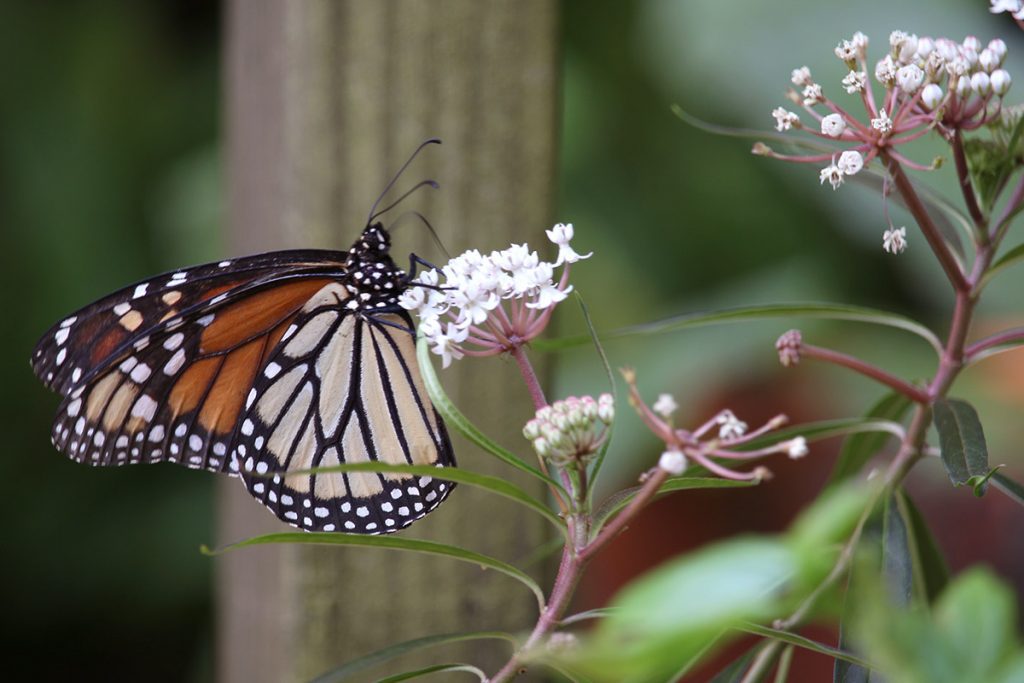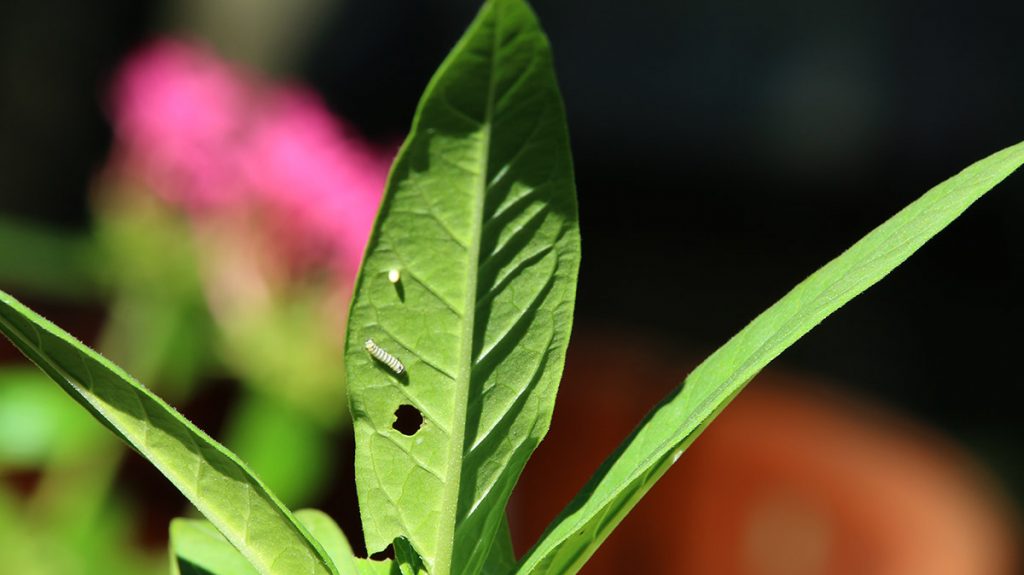In this two minute video, we can see monarch caterpillars eat, grow, form a chrysalis, and emerge as butterflies. All while two young children look on. Look for a video on butterfly gardening on October 20 on Local Routes (8 pm ET on WFSU-TV), featuring Lilly Anderson-Messec of Native Nurseries.
Once again, Tallahassee’s own Hot Tamale composed some original music for us to use in this segment. Thanks again Craig and Adrian!
Subscribe to the WFSU Ecology Blog to receive more videos and articles about our local, natural areas, and subscribe to the WFSU Ecology Youtube Channel
Rob Diaz de Villegas WFSU-TV
Over the summer, my family and I have been witnessing a one-of-a-kind migration pass through a critical habitat: our backyard. It started last month, when I spotted several monarch caterpillars munching on our garden milkweed. We brought them into our home. It was a great opportunity for my sons to witness the life cycle of the most intriguing butterfly species to (temporarily) call our area home.
While friends and family seem to love images of my kids kayaking or camping, some of the best quality outdoors time they get is in our garden. Max and Xavi Help me plant seeds. They watch them grow, flower, and make food we eat. They get their hands dirty and see plant biology in action.
But they also see that our garden is an ecosystem. Bees pollinate, birds try to sneak off with blueberries, frogs and lizards hide under leaves. Sometimes those leaves are chewed up, and we turn them over to find a creepy-crawly culprit: caterpillars. I wrote last year about the caterpillars and butterflies we found in the garden– long tailed skippers, giant swallowtails, and black swallowtails. This year, one species is flourishing in our garden: the monarch.
Monarch butterflies are unlike any of the other butterfly species in our area in that they are not full time residents. The monarchs we’re currently seeing in Tallahassee are in the process of making their way north from central Mexico. This migration will take 3-4 generations to complete, and will cover over three thousand miles. The final generation will typically reach the northern United States and Canada starting in July. The final generation will usually start making its way back south in September or October.
A major challenge facing the species is the loss of habitat along its migratory path. With the development of forested land in which milkweed would grow, more people are planting milkweed in their garden to help monarchs. And, as monarch numbers decline, more of us take additional steps to protect their larvae. That’s how we ended up taking six caterpillars into our home. It was great for the kids (and their parents) to see some seriously cool biology up close.
Witnessing the Life Cycle of the Monarch Butterfly
The video above chronicles a two week period which began with some small caterpillars entering our kitchen. We watched them eat and grow, and then eat and grow some more. As they grew, their bodies changed in subtle ways. Monarch caterpillars go through five stages of growth between hatching from eggs and forming their chrysalises. These phases are called instars. Between each instar, the caterpillar molts its skin (which it then eats).
When we found them in the garden on July 11, they were teeny. Consulting the University of Minnesota’s Monarch Lab page, they appeared to be second instar larvae. Their barely formed antennae and small overall size were good indicators.
The photo above appears to represent, from left to right, third, fourth and fifth instar caterpillars. On the night of July 18, the caterpillars began the process of forming their chrysalises.
So, you might look at how fast they grow and think, “How much do they eat?” I started with a few stalks of milkweed from the plant where I found them. On the fourteenth, I bought two of the leafiest milkweed plants I could find and placed one in. By the eighteenth, they had almost entirely denuded both plants.
Guess what happens when an animal eats that much:
They poop a lot. It’s important to clean the enclosure to reduce any harmful bacteria or parasites. Anyhow, on to the fun part:
One by one, they started moving to the top and excreting these little white threads in a circle around their backsides. This would later help their chrysalises stick firmly to the top. And it came in handy, too, as curious two and five year olds aren’t always as gentle as you’d like them to be when inspecting the habitat.
The next morning, they all chrysalised. As you see in the video above, it seems as if they form the chrysalis under their skin and, at the appropriate time, shrug off their skin. I sped it up in the video above, but if you’re interested in seeing it occur in real time, it took about three minutes:
The Monarch Chrysalis
Over the course of the next week, we could start to see the monarch take shape through the skin of the chrysalis. In the photo below, you can see a chrysalis moments after it is formed. Note that you can still see the caterpillar segments.
A few minutes later, the chrysalis had a smooth green coating. Note that you can see the same segments through that coating:
Finally, after a few days, you can start to see the monarch wing pattern inside of the chrysalis:
We had a good bunch of cooperative monarchs. They both made the chrysalises and emerged as butterflies in the morning, as we ate breakfast. We let the butterflies flitter about in the enclosure until we were all home from work and summer camp. Then, the happy moment you see in the video above- six monarch butterflies starting the next leg of their northern migration.
Just when we thought we were done…
By the time they were ready to make their chrysalises, they had demolished two full potted milkweed plants. Not knowing that they were about to metamorphose, I bought two more plants. I took the two naked plants outside, and, within a couple of days, they were sprouting new leaves. All of a sudden, I had a lot more monarch habitat in my backyard. When we left for vacation two weeks ago, I saw this under a leaf:
When we got back on Monday, I found and gathered over twenty caterpillars from all of our plants. In an interview I conducted for a follow up to this video, I learned that it hasn’t been a typical year for monarchs.
“This year has been strange because we had a large amount of monarchs earlier, and we’ve continued to have them throughout the season.” Lilly Anderson-Messec told me. She manages Native Nurseries in Tallahassee, and I interviewed her on creating butterfly gardens. You can see that in October.
Lilly attributes the unusual migration to a warmer than usual winter. “That’s been a positive and a negative for them.” Warmer winters mean that non-native tropical milkweed doesn’t die back as it should. When milkweed doesn’t die back, it can contract a disease called Ophryocystis elektroscirrha, or OE. OE is fatal to monarch and queen butterflies.
So, while more milkweed means more monarch breeding, more of them are also contracting OE. That’s why it’s important to know how to maintain your milkweed over the winter.
Native vs. Non-Native Milkweed
Milkweed that’s native to Florida will lose its blooms shortly after the fall monarch migration. “The native milkweeds naturally clean themselves by dying back,” Lilly said. Tropical milkweed can bloom year-round, especially during a warm winter. This does two things. One, it keeps monarchs in Florida over the winter, instead of their over-wintering grounds in Mexico. It also allows OE to accumulate.
If you have tropical milkweed in your yard, Lilly recommends cutting it back (to about six inches) after Thanksgiving. And, if you have milkweed, it’s likely this non-native variety:
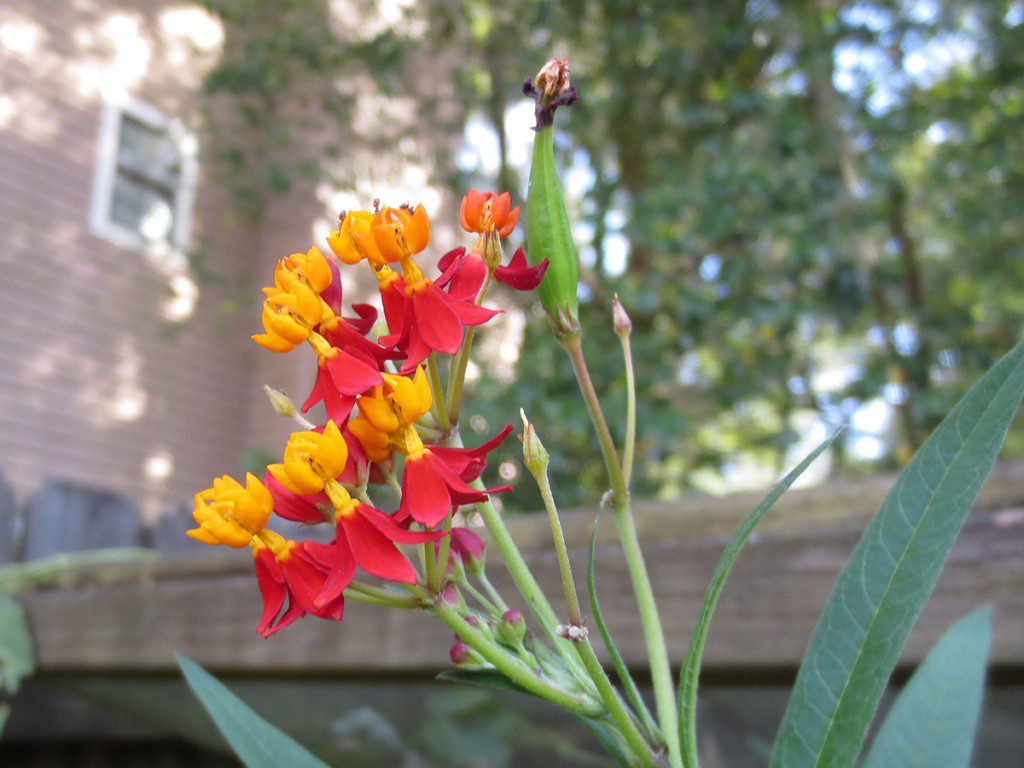
Tropical milkweed (Asclepias curassavica) in bloom. There is a variation that can be found locally with all yellow flowers.
Most of us have non-native milkweed because that’s whats available at local nurseries. But Lilly says that problem is being addressed.
“We’ve been plotting where the plants are because they are dying out because of habitat degradation and habitat loss.” Lilly said. “We’re finding where they are and we’re trying to conserve them. And we’re trying to save the genetic material through cuttings and through saving seeds so that we can produce them so that people can grow them in their homes.”
One native variety that can be purchased locally is swamp milkweed (Asclepias perennis):
This species of milkweed doesn’t grow as large as tropical milkweed, so when I needed a lot of caterpillar food fast, I went with tropical.
During my recent travels shooting EcoAdventures, I have seen other native species that we might perhaps be able to purchase in the future.
The milkweed above was noticed by Ryan Means as he led a field trip through the Munson Sandhills region of the Apalachicola National Forest. It’s called sandhills milkweed (Asclepias humistrata), appropriate for the habitat in which it was found.
I found this fewflower milkweed in the Apalachicola River delta as I was getting footage for an upcoming two part video on the river and bay. You’ll be able to watch these as well adventures on the Upper Chipola River, Saint Vincent Island, and more this fall on the WFSU Ecology Blog and on Local Routes.
UPDATE | August 19, 2016
As of this morning, we had twenty one total chrysalises, and another large caterpillar is just about ready to go. That’s after we gave five caterpillars to Xavi’s preschool, where they regularly raise monarchs.
As this second wave was chomping away in their enclosure this past weekend, my wife Amy noticed a monarch butterfly in the garden.
After I took the photo above, I started inspecting our milkweed and found several eggs. Right now, the third wave is starting to hatch, and eat:
It’s been a crazy summer with these little guys. As the fall wildflower season approaches, I know that another butterfly breeding season is coming up as well, for the native species. Looking through my photo archives, I’m seeing that it was around this time last year that I started seeing several other species on our plants. Hopefully I’ve provided enough nectar and larval food for another active season.
I can’t always fit it into my schedule to spend a little time in the woods, or poke around a salt marsh as the tide rises. Luckily, I’m able to have a little habitat right in my backyard to soothe and surprise me.
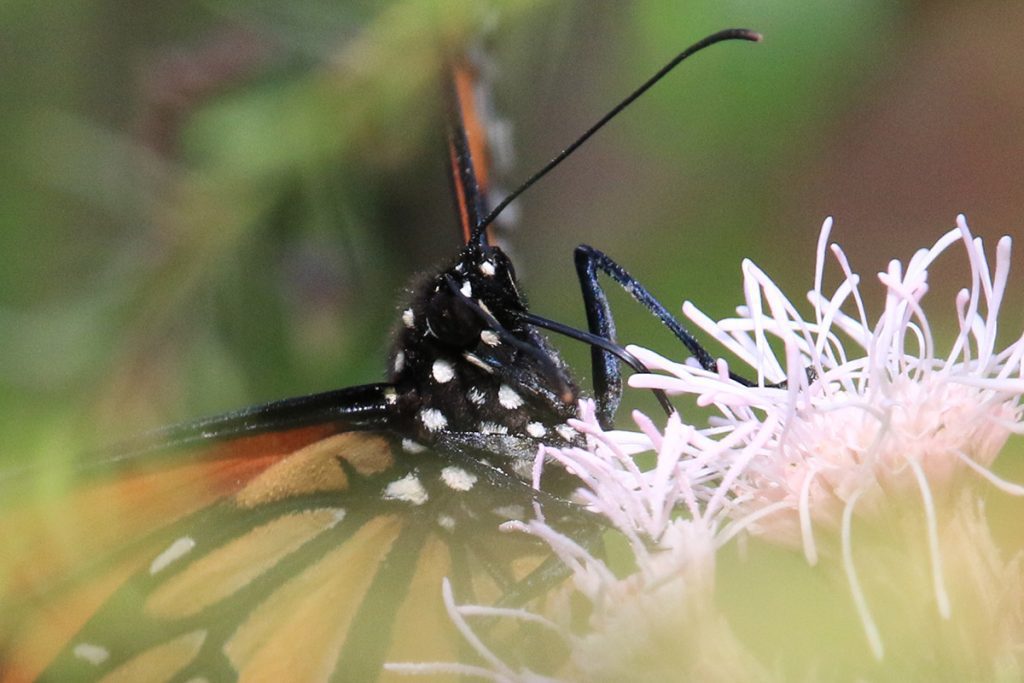
Dig Deeper into Backyard Ecology
What can we do to invite butterflies, birds, and other wildlife into our yards? And what about the flora and fauna that makes its way into our yards; the weeds, insects, and other critters that create the home ecosystem? WFSU Ecology Blog takes a closer look.

